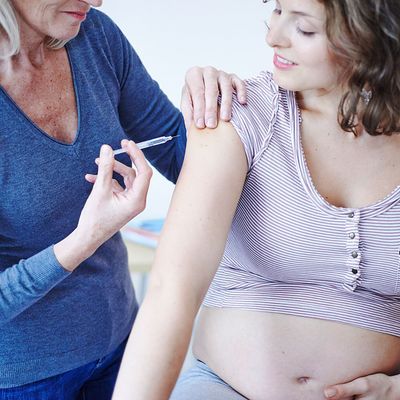
Many women are several months into their first pregnancies before they hear that they should be vaccinated for pertussis — commonly known as whooping cough — during their pregnancy. Now, days after a healthy newborn died of whooping cough in California, is as good a time as any for a reminder.
Because of routine vaccination (introduced in the 1940s), the number of people who get whooping cough in the United States dropped from around 200,000 to an all-time low, in 1976, of just over 1,000 cases. But in 2014, there were more than 32,000 cases reported, a 15 percent increase from 2013. The causes for the increase in cases are not fully understood, but are thought to include parents not vaccinating their children, and a new pertussis vaccine that doesn’t last as long as the previous version.
The DTaP vaccine is recommended for anyone over the age of 2 months, in several installments (usually 2 months, 4 months, 6 months, 15 months, and 4 years). This means that newborns — who are also fragile and most vulnerable to rare illnesses anyway — cannot get the vaccine and are at high risk of getting pertussis during that short but important window. For this reason, the CDC recommends that all women in the third trimester of their pregnancies (every pregnancy!) receive one of two available Tdap vaccines (the variant for people over the age of 11). These are widely available at most pharmacies and doctors’ offices, and have few risks or side effects. Getting the vaccine means that some immunity passes from the mother to the baby so that the child is protected after birth.
Even unvaccinated babies whose mothers get the vaccine as directed during pregnancy are at some risk of getting whooping cough, but it is lowered. It’s unknown if the mother of the baby in California was properly vaccinated during her pregnancy, but under-vaccination is at least part of the cause of the recent spike in cases.




